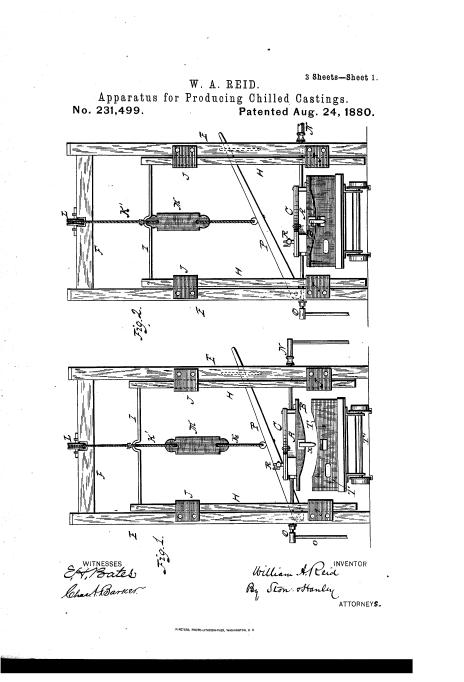
This is of interest because it is assigned to Wm. S. Buffham, Thomas Dickinson, George Gorton, and Thomas Davis. William Buffham being George I's brother in law. I haven't been able to find any information about Dickinson or Davis. Given the date, 1880, George II would have been 15, which makes it a bit unlikely that he is the assignee. At that time, there was a company in Racine, The Seaman Chilled Plow Company which uses "Seaman's patent chilled wearing-parts for plows and cultivators". Ref of quote: History of Racine and Kenosha Counties, 1879
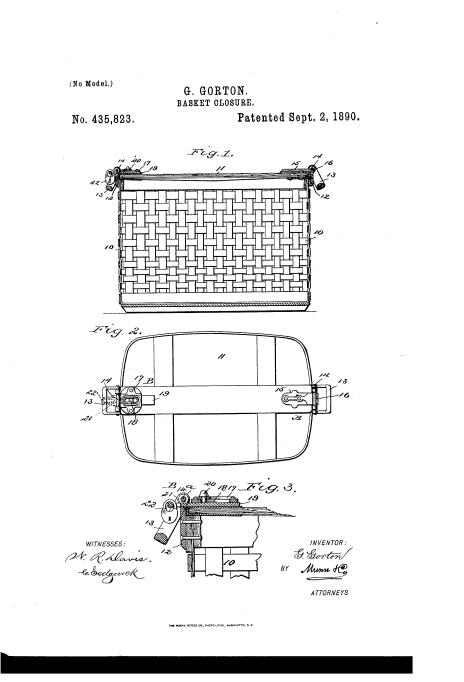
This appears to be George II's earliest patent. At the time (1892) George II was employed by The Racine Basket Manufacturing Company
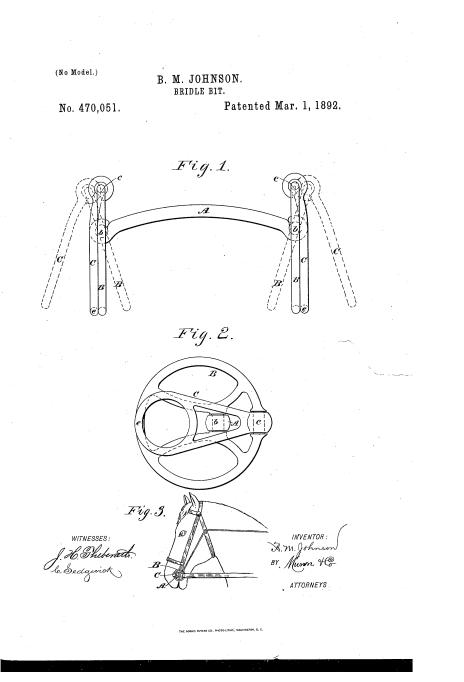
This patent is assigned to Frederick W. Bouce and George II. The reasons for this assignment are completely unknown.
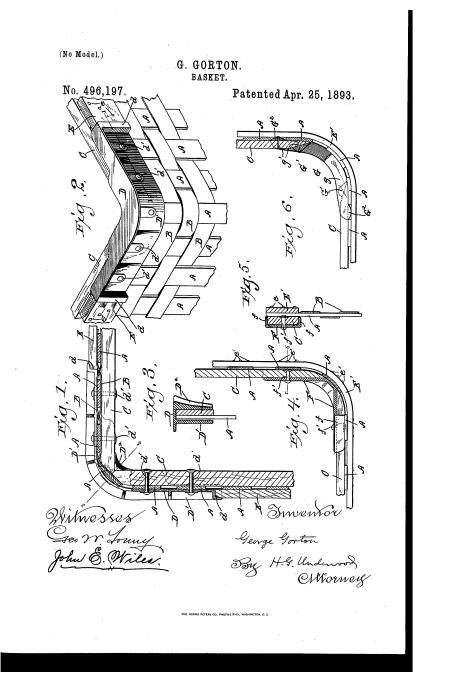
This patent is witnessed by George II's brother Charles. At the time (1892) George II was employed by The Racine Basket Manufacturing Company
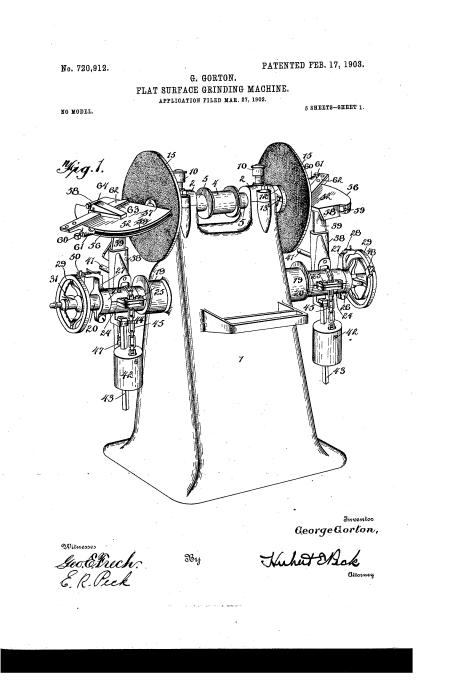
The first machine tool patent
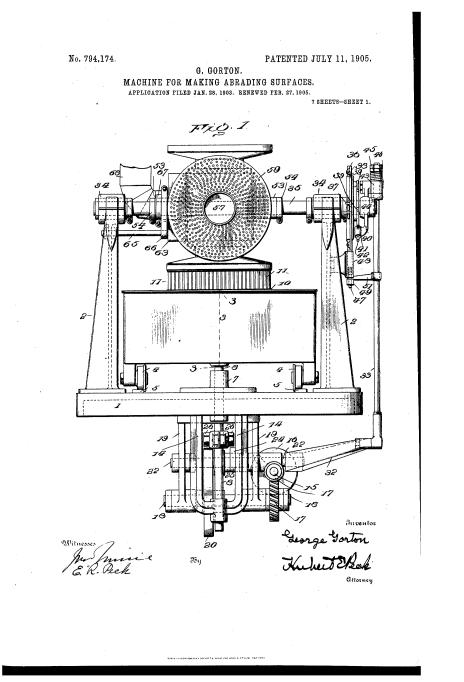
This was assigned to Builders Iron Foundry, Providence, RI.

This seems to be a machine to coat paper or cloth with abrasives, such as sanding belts or disks.
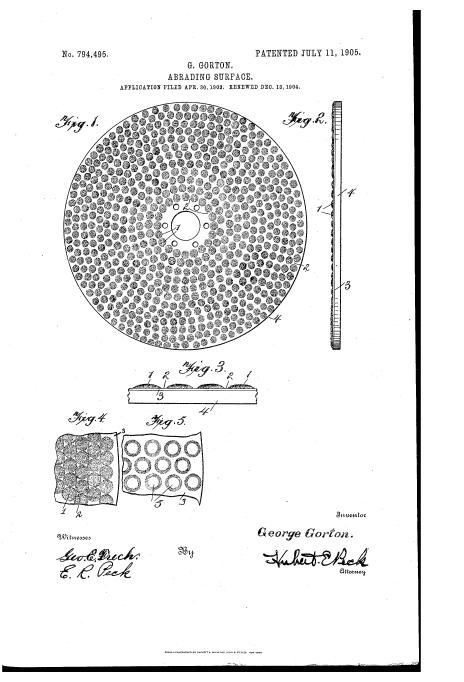
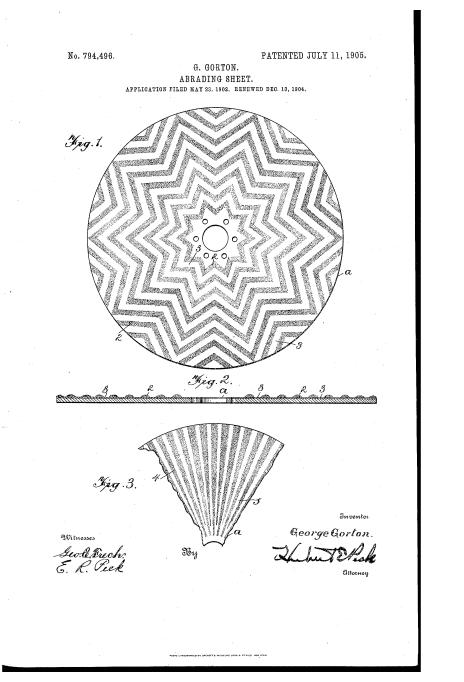
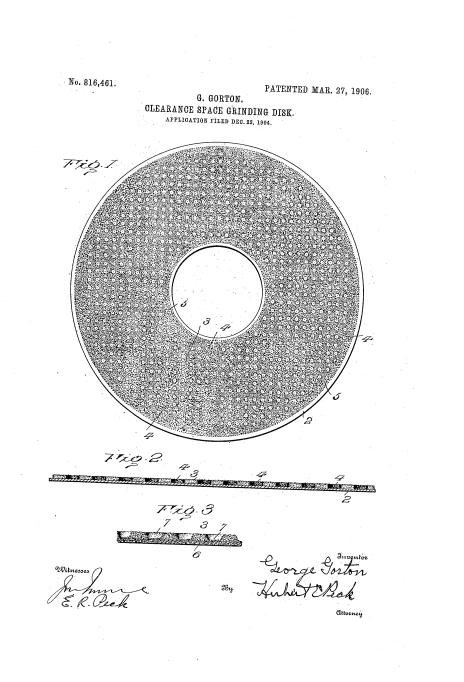
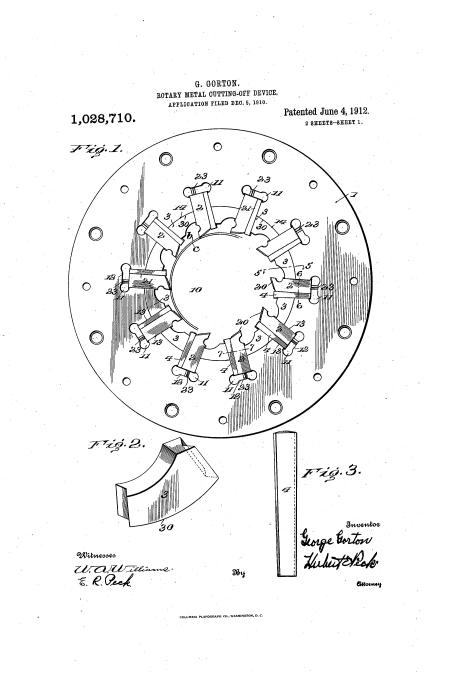
The first of the cut-off patents. The cut-off machines were used with heavy stock; George's memoirs talk about them being used by American Locomotive to cut axle stock, by Allis-Chalmers of Milwaukee for general stock cutting, and by the Dominion Iron and Steel Company of Montreal cutting shell blanks for use by the Canadian and British armies during WW I. In all, Gorton Machine built cut-off machines of 3-inch, 6-inch and 13-inch capacity. Production of these ceased in the mid 1920's. (1924?)
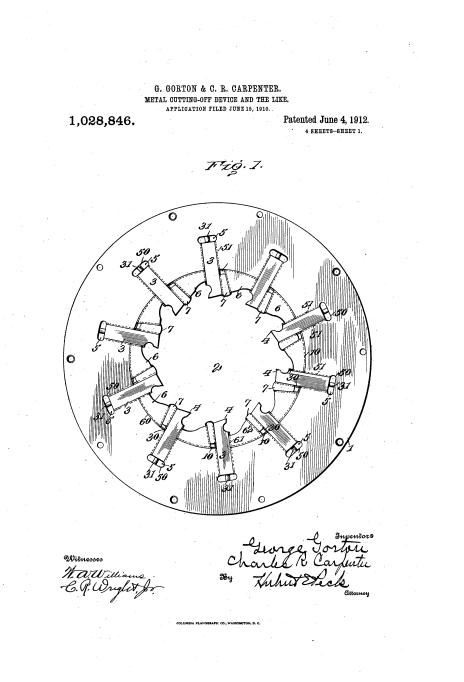
By George and Charles Carpenter
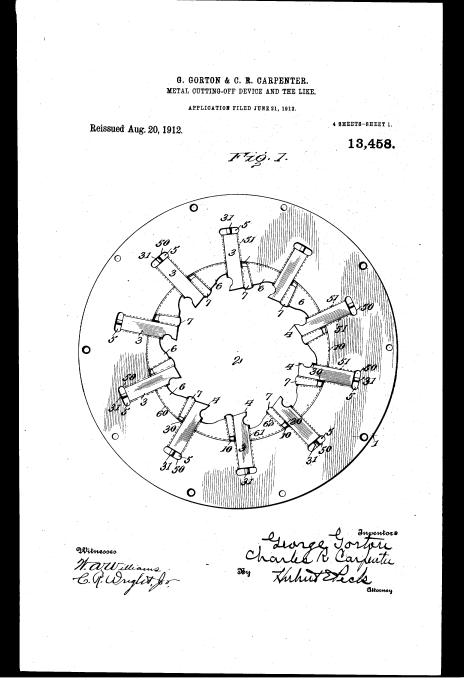
By George and Charles Carpenter. A re-issue of 1028846
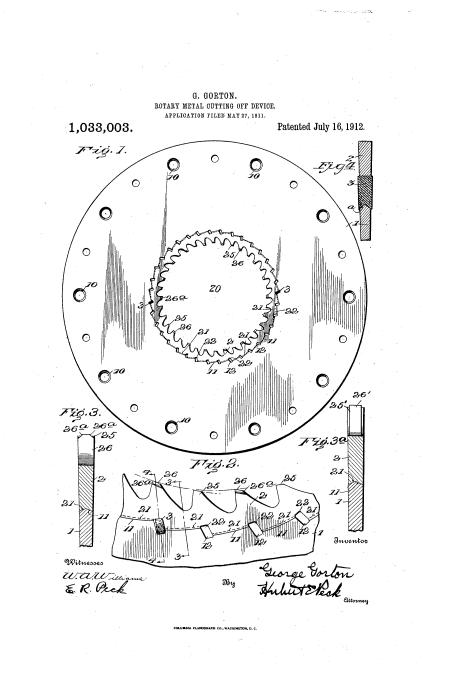
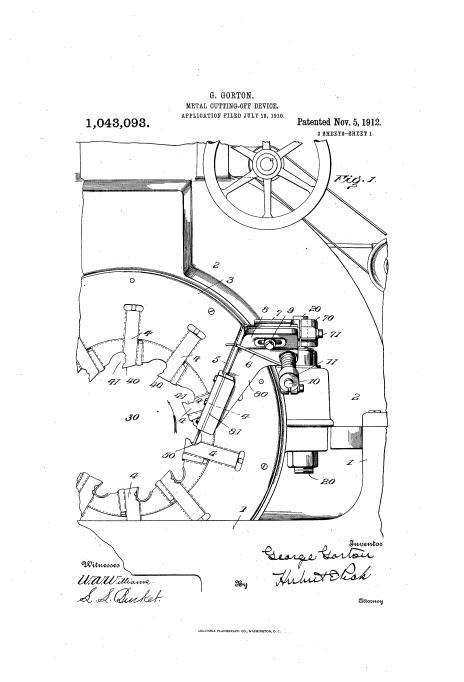
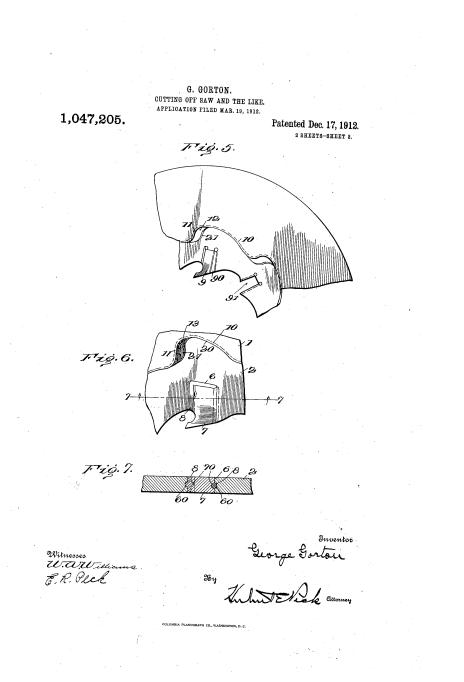
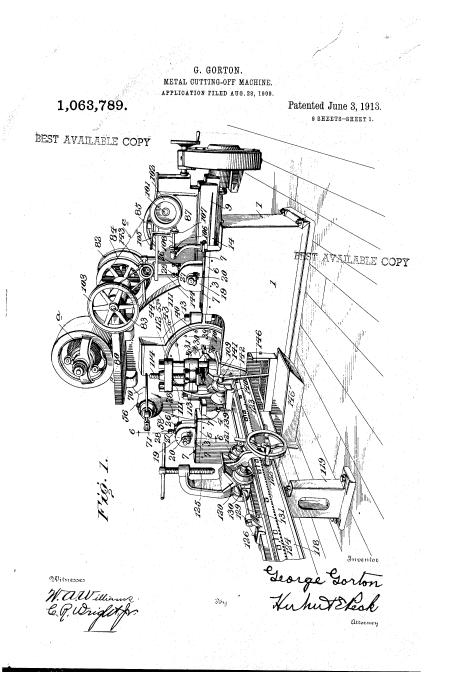
This is one of the more complex patents.
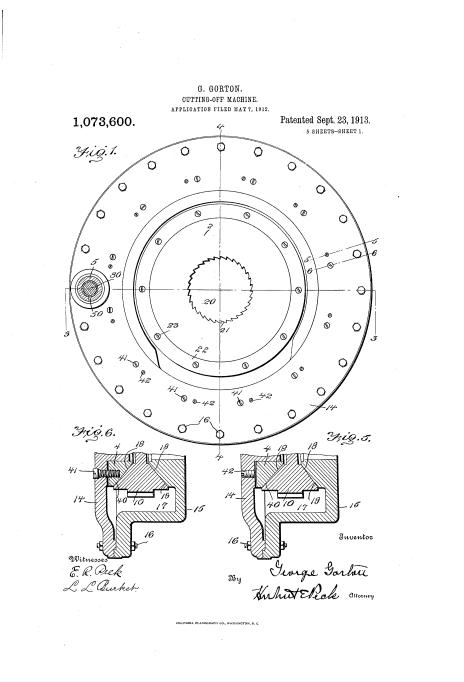
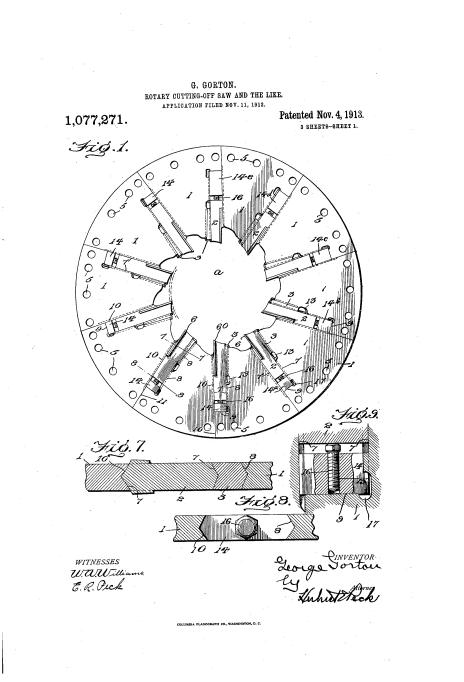
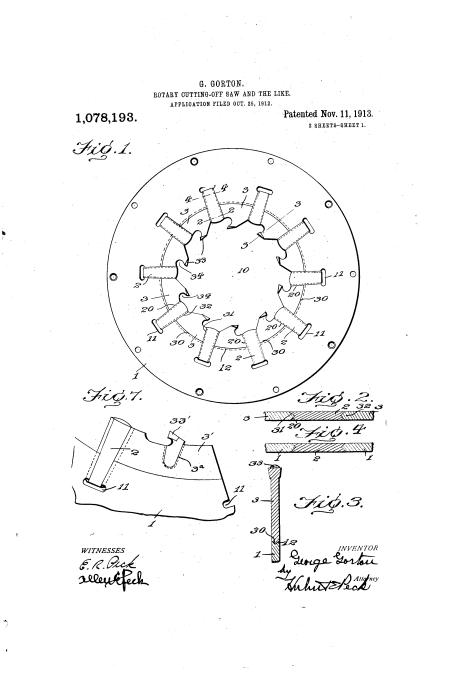
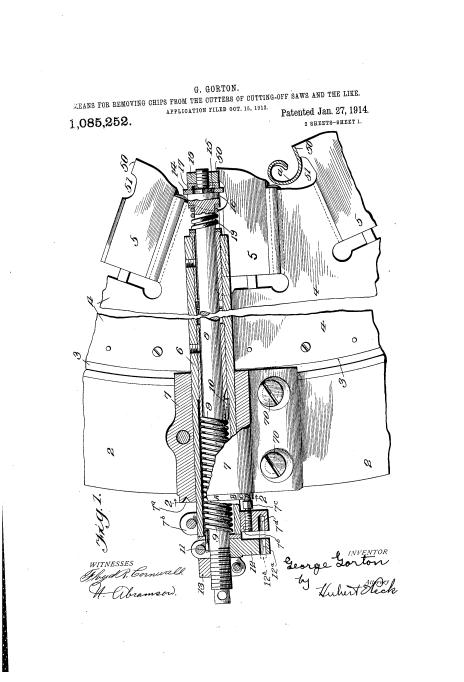
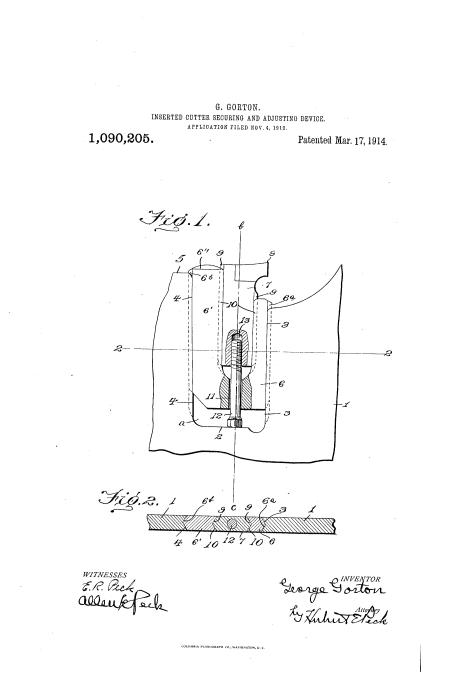
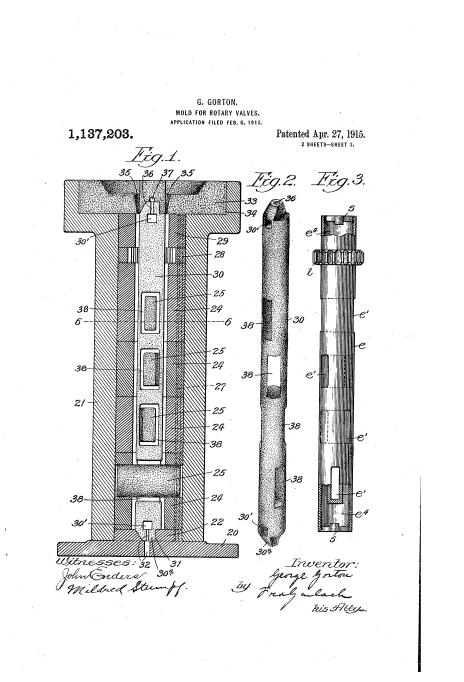
This patent was assigned/sold away, and was intended for use "In water-cooled valves for multi-cylinder explosive engines". Interesting that internal combustion engines were called "explosive" at the time. There were a couple of digressions by the company into other fields - George was hired by the J.I. Case company to build two of their entries into the 1911 Indianapolis 500, as well as a pair of prototype radial air-cooled engines.
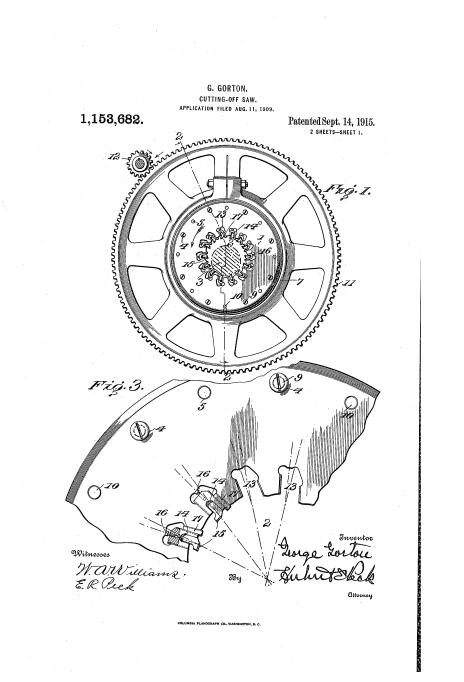
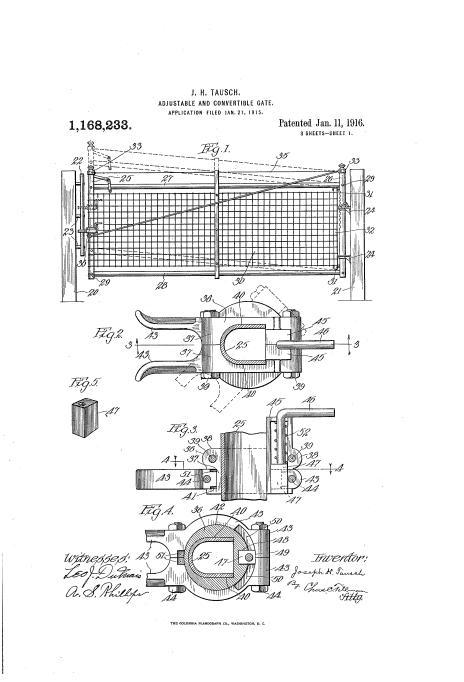
Another digression from machine tools was the Gorton Gate and Fence Company which seems to have been a partnership with J. Tausch. Tausch is listed as the inventor, but assigns half interest to George. George's memoirs seem to indicate that he was directly involved with the design of many of their products.
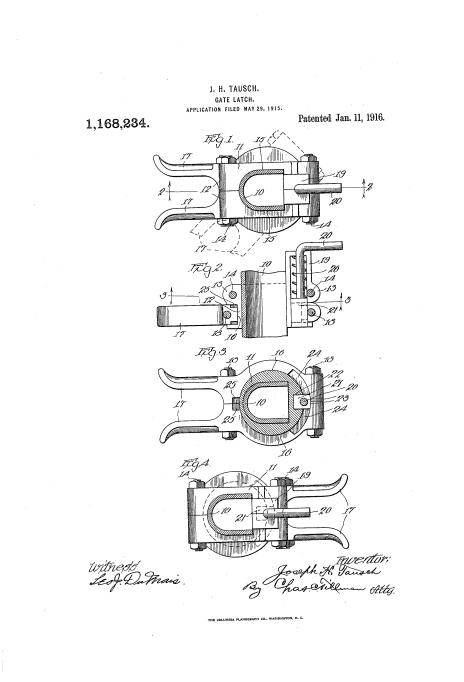
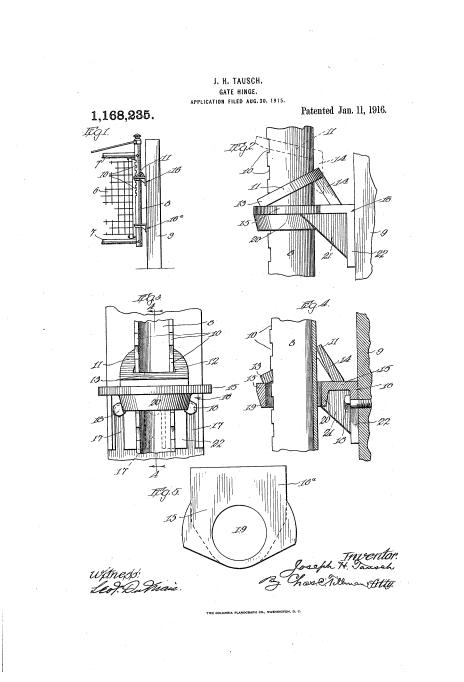
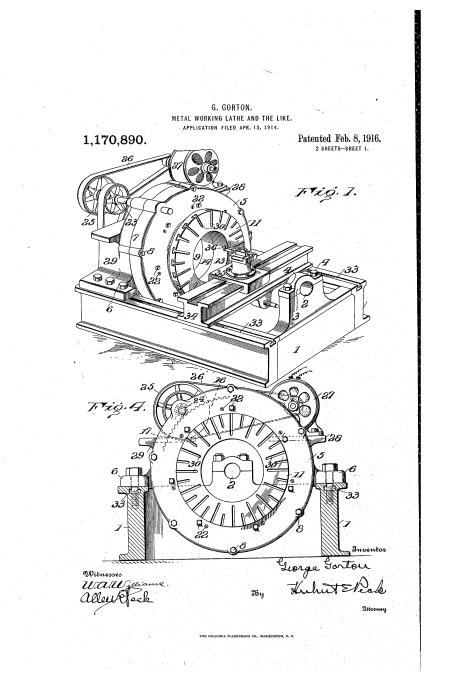
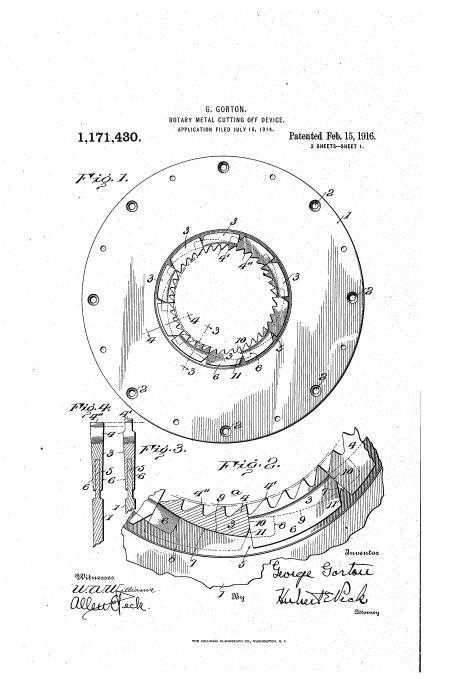
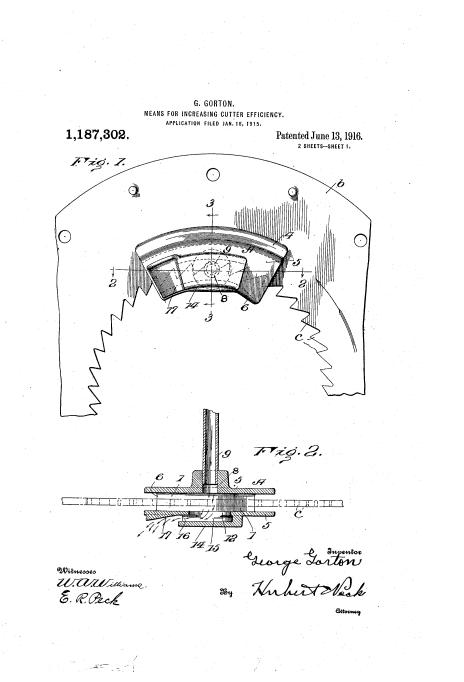
This seems to be a way to cool & lubricate cutoff tools with oil
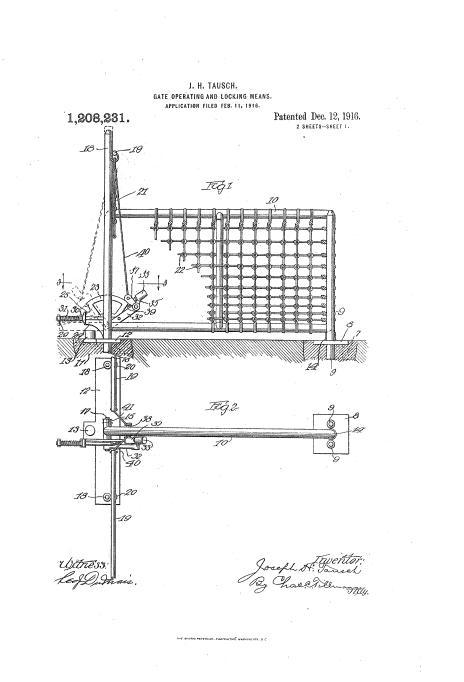
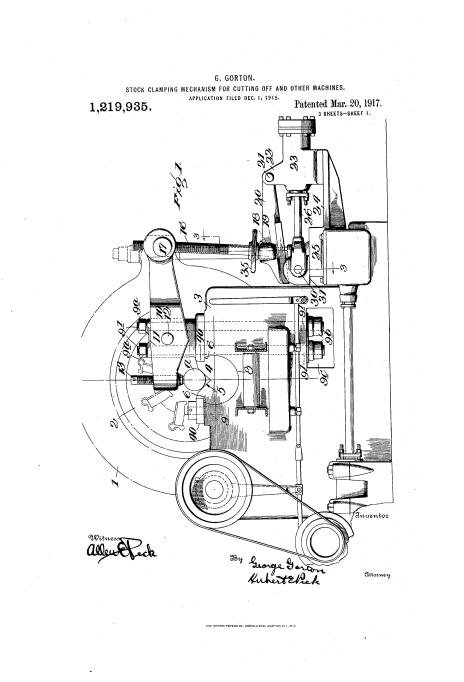
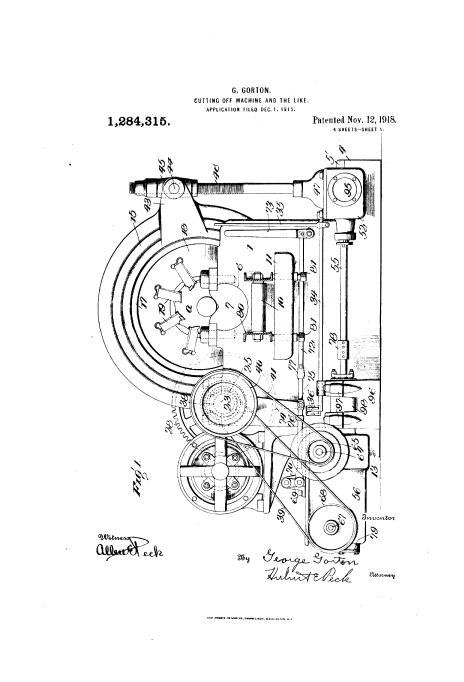
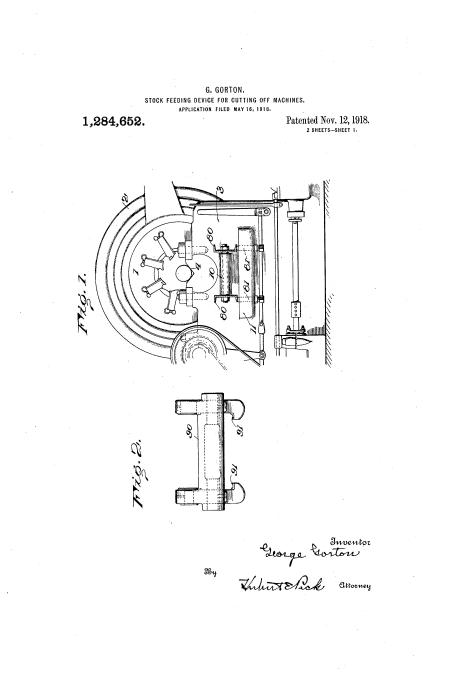
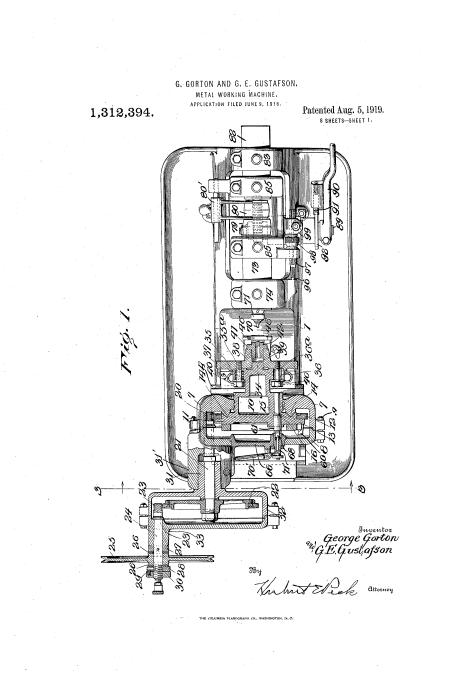
This is a 'Fuse Router', a joint invention with George Gustafson. It seems that the fuse heads in WW I era artillery shells would use a powder train as a timing device. Unless the powder groove is cut in a very precise fashion, the fuse will either explode too early or too late. The consequence is that it is dangerous to friendly troops, or ineffective vs. the enemy. Gorton Machine was enjoined to build fuse routers because of it's experience building precision engraving machines. By the end of WW I, Gorton Machine had built more than 1,000 No. 8-C Fuse Routers.
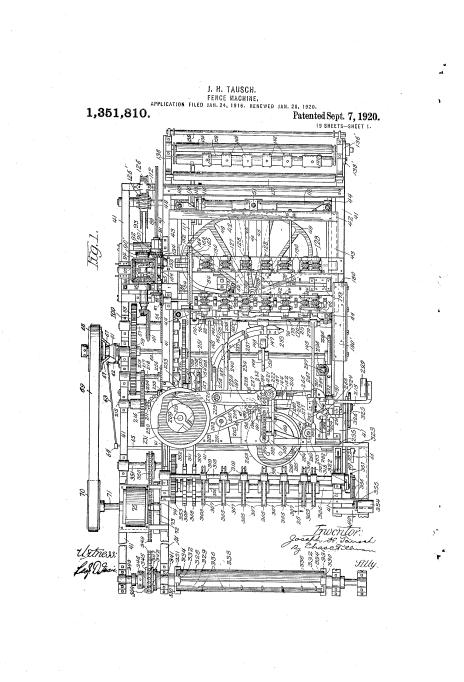
This enormously complicated looking beast seems to be a weaving machine. Instead of weaving cloth, this uses wire to make cyclone-style fences. George's memoirs indicate he sold the rights to this patent a number of years later to the Cyclone Fence company.
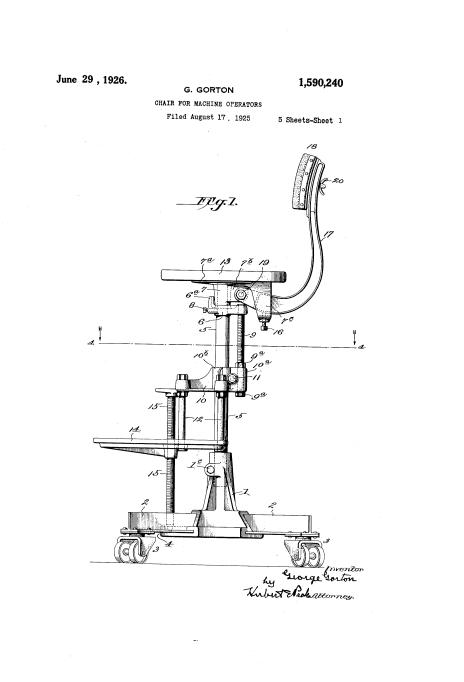
This was signed in Cement, Oklahoma - George and the family spent a great deal of time there in the early 1920's. George had, over a number of years, acquired a number of shares of oil stock (Oklahoma Star Oil Company) and spent time there trying to make a living in the oil business.
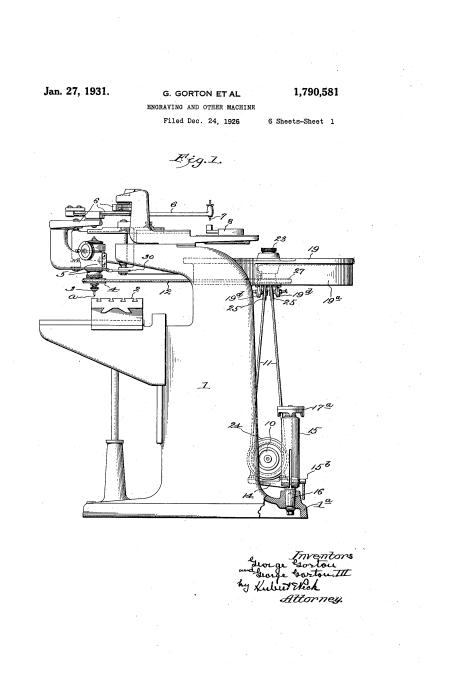
A joint invention by George II and George III
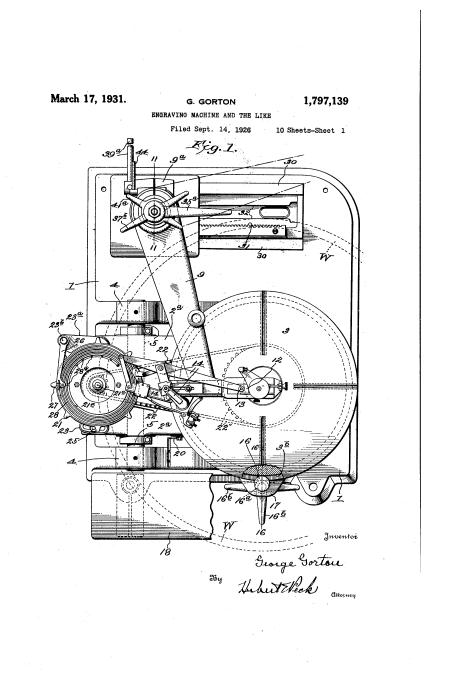
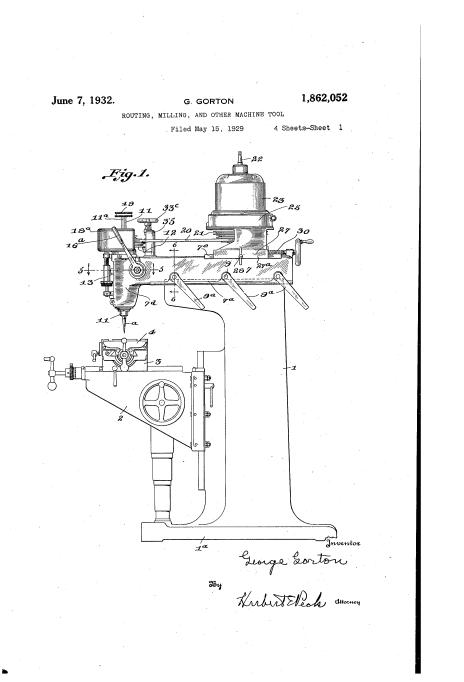
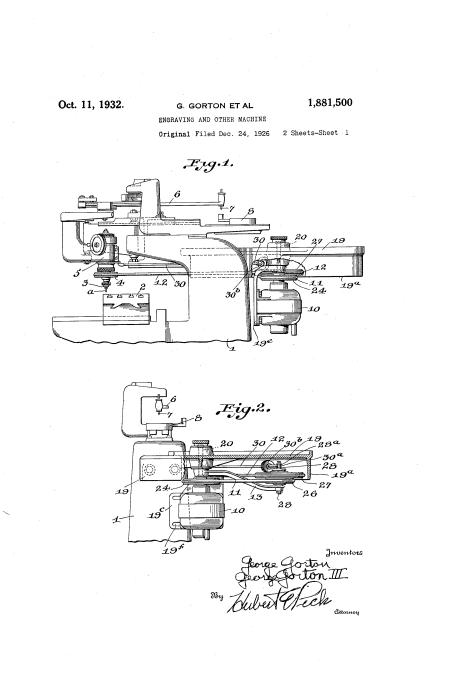
Another George II and George III collaboration.
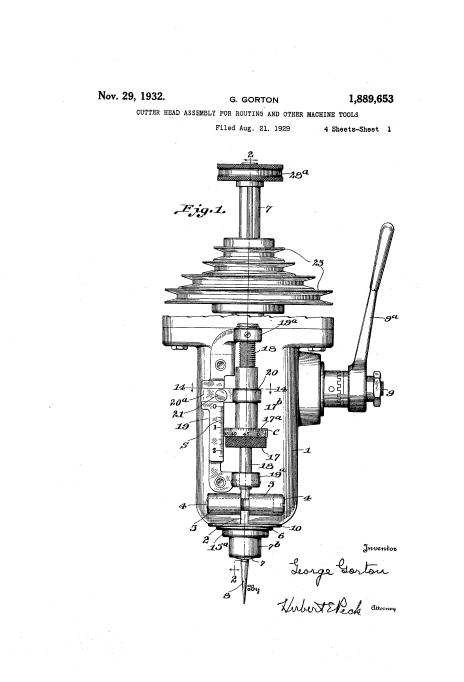
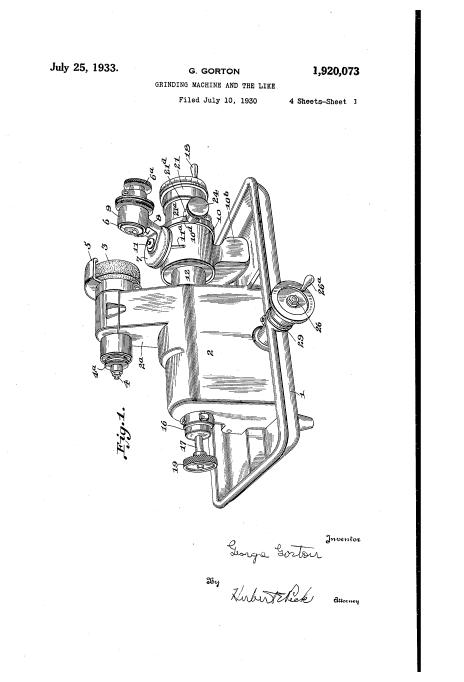
Current cutter-grinders still look a lot the same.
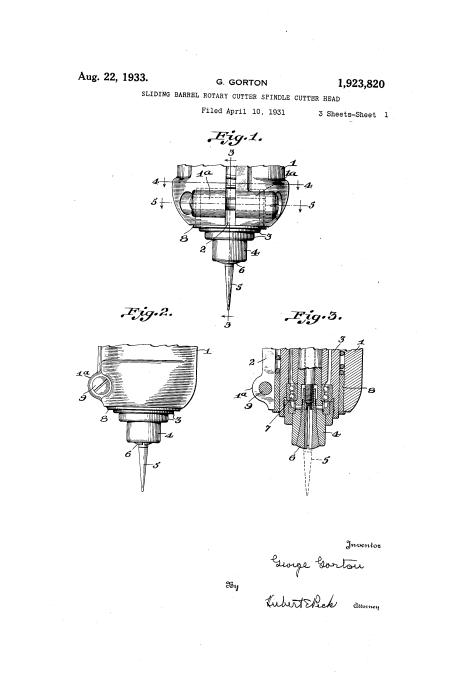
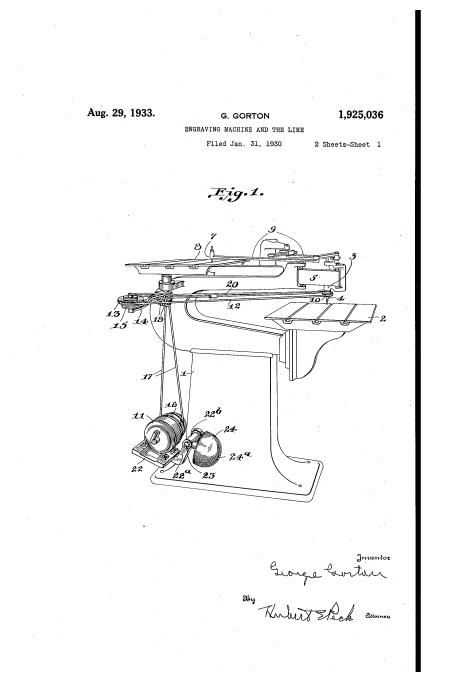
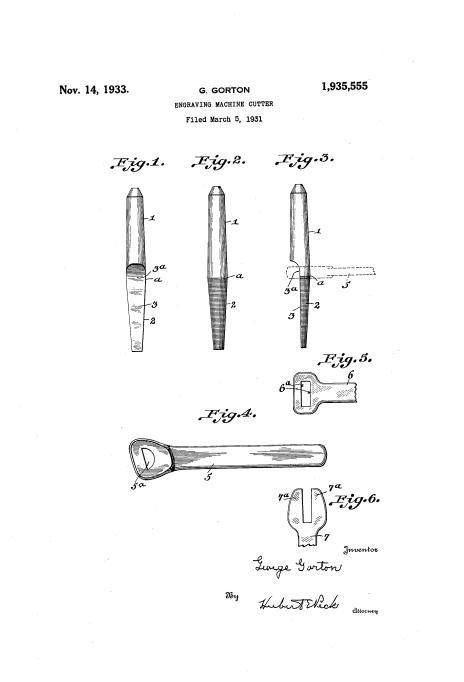
Complete with specialty wrench.
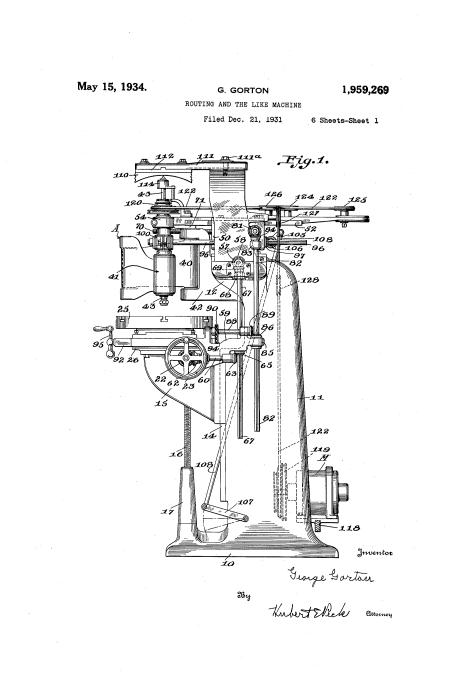
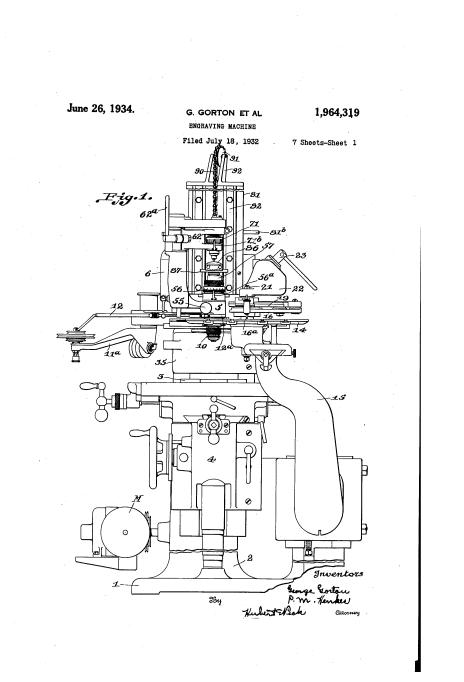
A joint invention with Peter M. Henkes
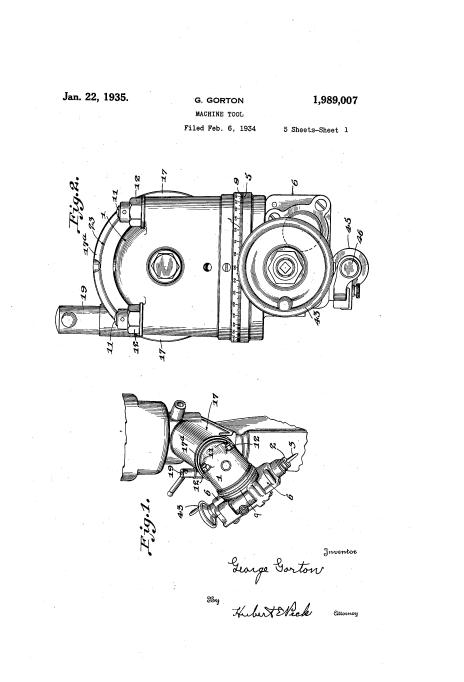
A sort of swivel head. I recall seeing this kind of head (I think) on various cutter grinders.
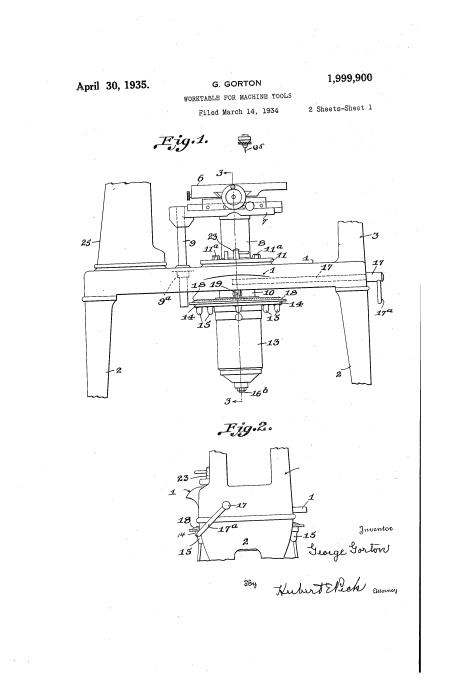
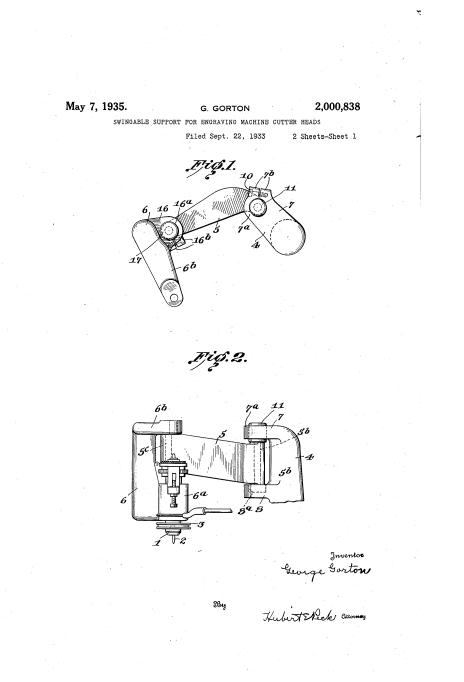
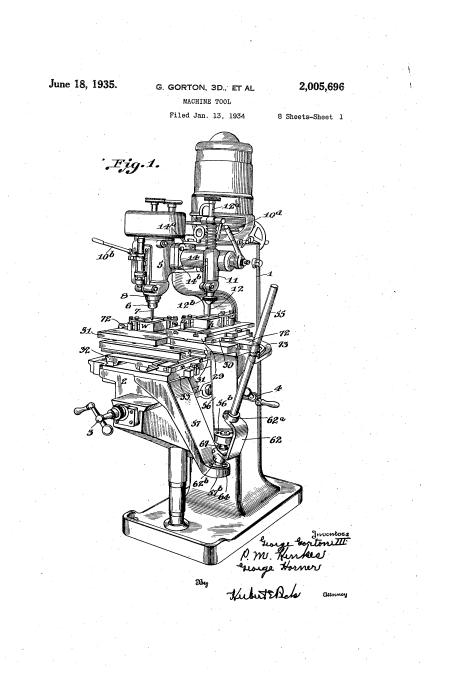
This duplicator is definitely a George III invention, with co-inventors Peter Henkes and George Horner.
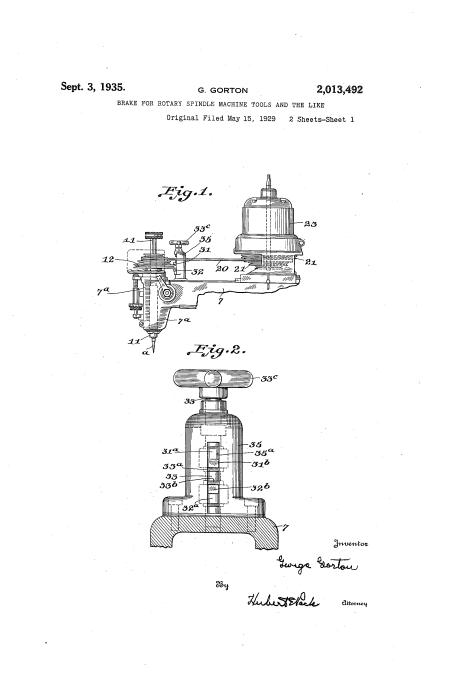
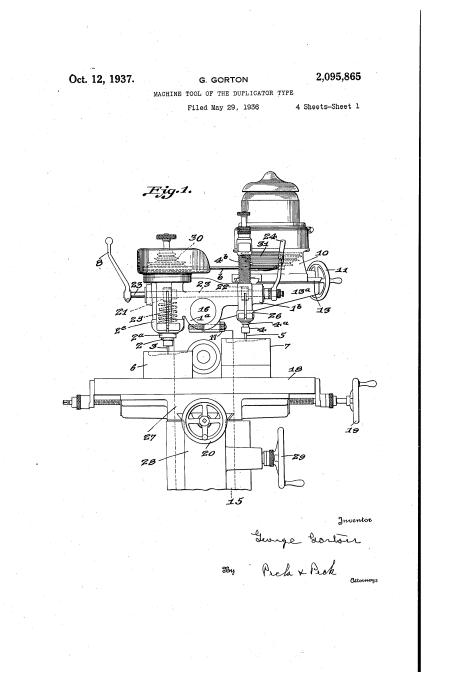
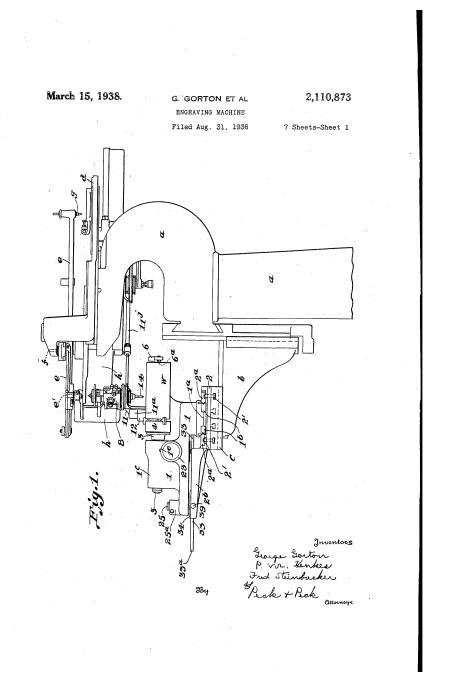
A co-invention between George (which one isn't clear), Peter Henkes, and Fred Steinbrecker.
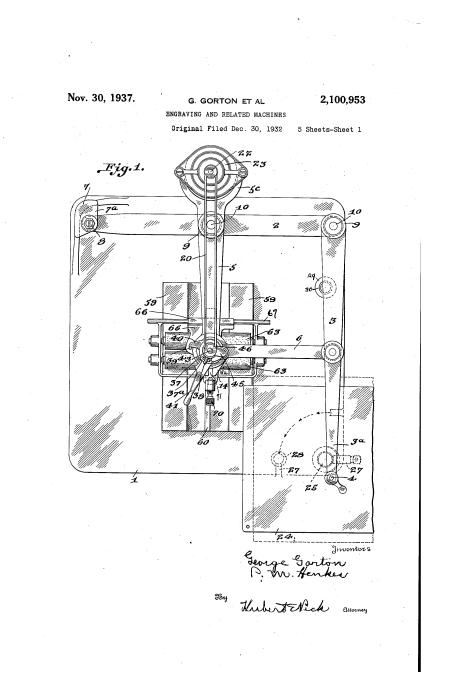
By George and Peter Henkes
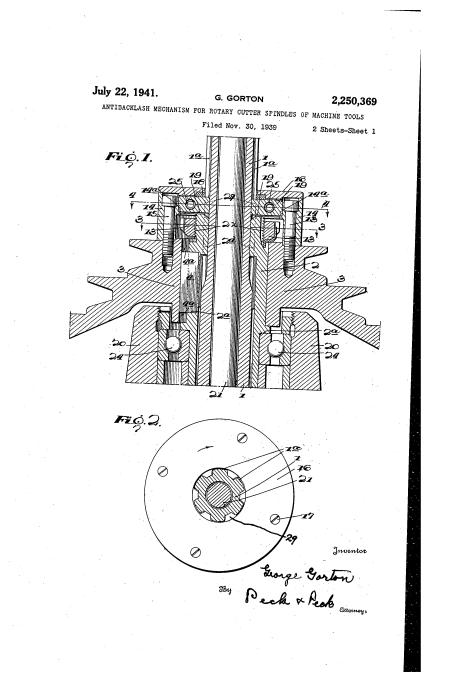
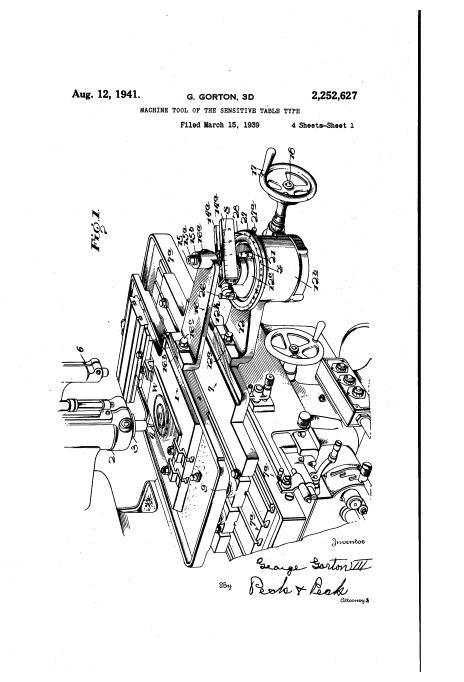
By George III. I don't understand what a 'sensitive table type' is. This seems to be a way to obtain higher precision by reorganizing the location and axis of the cutters. Clarification would be nice.
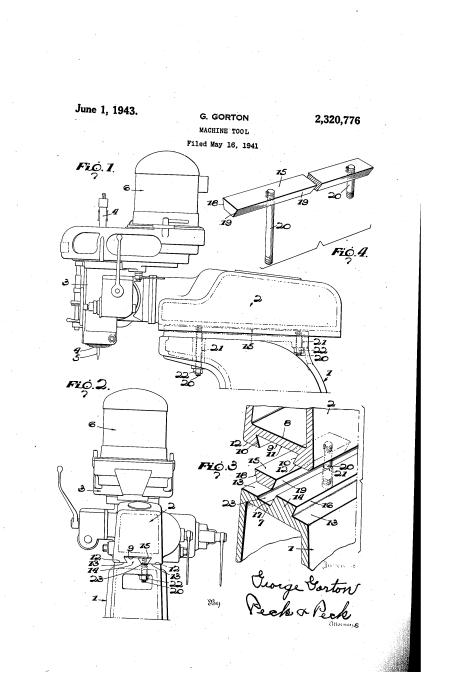
The invention here seems to be related to the ways on a movable ram head and locking them.
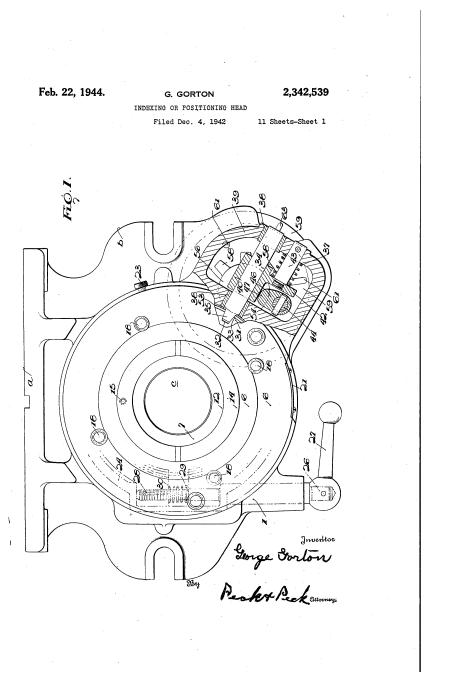
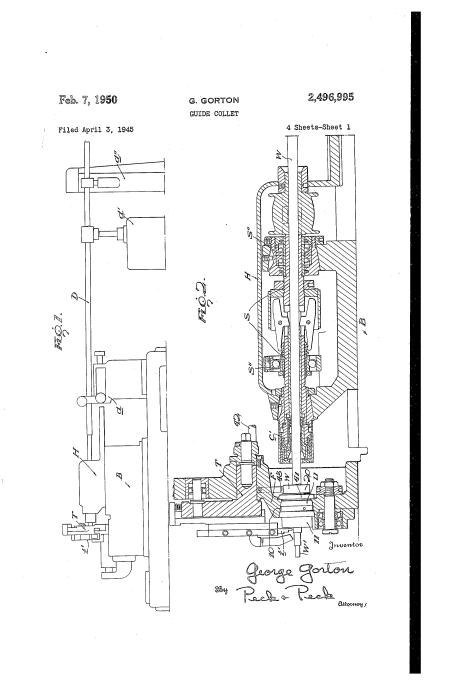
Based upon the signature, I believe this to be an invention by George III. When it was filed George II was 80 years old, and had been forced (by doctor's orders) to retire from day-to-day operations of the company.